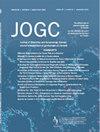受训者参与阴道子宫切除术:一项加拿大多中心回顾性研究。
IF 2.2
Q2 OBSTETRICS & GYNECOLOGY
引用次数: 0
摘要
目的:比较腹腔镜子宫切除术(LH)和腹腔镜辅助阴道子宫切除术(LAVH)对妇产科研究生受训者阴道子宫切除术(VH)的影响,并探讨受训者受训者阴道子宫切除术(VH)对手术结果的影响。方法:对2016 - 2022年微创子宫切除术患者进行多中心回顾性队列研究。比较不同类型MIS子宫切除术的患者、手术和外科医生的特征,并通过多变量logistic回归分析确定与VH相关的因素。描述了每一种MIS子宫切除术中受训者的存在。以第一助理培训水平(工作人员、同事、住院医师)为主要接触对象进行VH手术结果分析。结果:我们纳入了5246例子宫切除术,其中1491例为VHs, 3352例为LHs, 403例为LAVHs。大多数子宫切除术涉及至少一名受术者(78.0%),VH较LH少见(76.8%比79.5%,P < 0.05)。当比较VH和LH时,有更多的同伴受累(48.3%比35.1%,P < 0.001)和更少的住院患者受累(60%比66.8%,P < 0.001)。在住院医生在场的子宫切除术中,30.2%的VH病例是由住院医生单独进行的,而LH病例的这一比例为42.4% (P < 0.001)。在调整混杂因素后,住院医师作为第一助理的VHs手术时间更长(151分钟vs 102分钟,P < 0.001),估计失血量更高(200毫升vs 100毫升,P < 0.001),术后并发症或30天内再入院率更高(28.9% vs 15.4%, P < 0.01)。结论:与LH相比,VH患者的受累率较低。阴道子宫切除术的手术结果发现,当实习生是第一助理相比,工作人员更差。本文章由计算机程序翻译,如有差异,请以英文原文为准。
Trainee Involvement at Vaginal Hysterectomy: A Canadian Multicentre Retrospective Review
Objectives
This study aimed to describe postgraduate obstetrics and gynaecology trainee involvement at vaginal hysterectomy (VH) compared with laparoscopic hysterectomy (LH) and laparoscopic-assisted vaginal hysterectomies, and to explore the impact of trainee involvement on VH surgical outcomes.
Methods
This was a multicentre retrospective cohort study of minimally invasive surgical (MIS) hysterectomies conducted from 2016 to 2022. Patient, surgery, and surgeon characteristics were compared between types of MIS hysterectomy, and factors associated with VH were identified through multivariable logistic regression analysis. Trainee presence at each type of MIS hysterectomy was documented. Analysis of VH surgical outcomes was performed with primary exposure as first-assistant training level (staff, fellow, resident).
Results
We included 5246 hysterectomies, with 1491 VHs, 3352 LHs, and 403 laparoscopic-assisted vaginal hysterectomies. Most hysterectomies involved at least 1 trainee (78.0%), less commonly at VH than at LH (76.8% vs. 79.5%, P < 0.05). When comparing VH with LH, more fellow involvement (48.3% vs. 35.1%, P < 0.001) and less resident involvement (60% vs. 66.8%, P < 0.001) was observed. Among hysterectomies that residents were present at, 30.2% of VH cases were performed with residents alone, as opposed to 42.4% of LH cases (P < 0.001). After adjusting for confounding factors, VHs with residents as the first assistant, compared with staff, had longer operative time (151 vs. 102 minutes, P < 0.001), higher estimated blood loss (200 vs. 100 cc, P < 0.001), and a higher rate of postoperative complications or readmission within 30 days of surgery (28.9% vs. 15.4%, P < 0.01).
Conclusions
Residents are less frequently involved at VH compared with LH. VH surgical outcomes were found to worsen when trainees were the first assistant as opposed to staff.
求助全文
通过发布文献求助,成功后即可免费获取论文全文。
去求助
来源期刊

Journal of obstetrics and gynaecology Canada
OBSTETRICS & GYNECOLOGY-
CiteScore
3.30
自引率
5.60%
发文量
302
审稿时长
32 days
期刊介绍:
Journal of Obstetrics and Gynaecology Canada (JOGC) is Canada"s peer-reviewed journal of obstetrics, gynaecology, and women"s health. Each monthly issue contains original research articles, reviews, case reports, commentaries, and editorials on all aspects of reproductive health. JOGC is the original publication source of evidence-based clinical guidelines, committee opinions, and policy statements that derive from standing or ad hoc committees of the Society of Obstetricians and Gynaecologists of Canada. JOGC is included in the National Library of Medicine"s MEDLINE database, and abstracts from JOGC are accessible on PubMed.
 求助内容:
求助内容: 应助结果提醒方式:
应助结果提醒方式:


